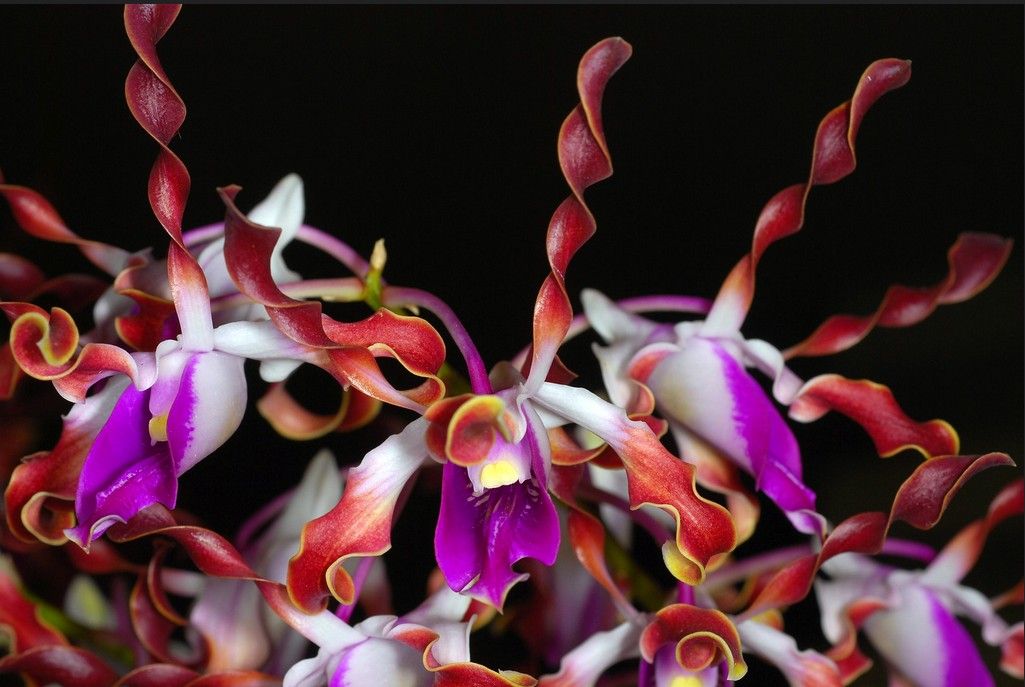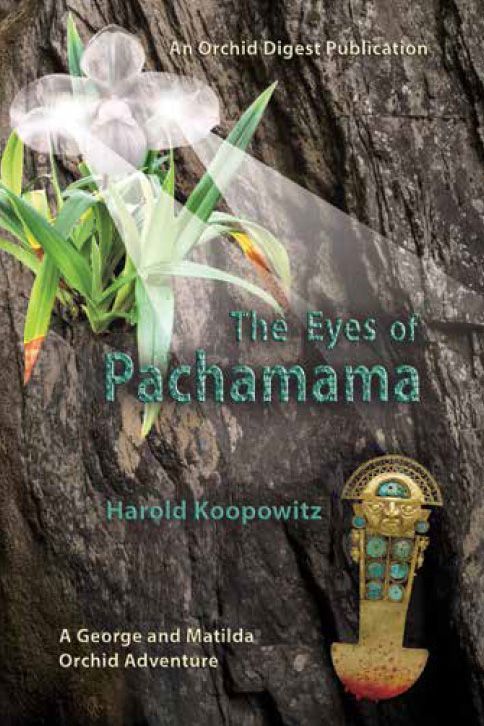Cattleya rupestris
October 22, 2025
Cattleya rupestris
ATTEND IN PERSON OR VIRTUALLY, THE ORCHID DIGEST CATTLEYA SYMPOSIUM 11/8/25 TO LEARN MORE ABOUT THESE BEAUTIFUL ORCHIDS. INFORMATION: WWW.ORCHIDDIGEST.ORG
Cattleya rupestris is endemic to Brazil and grows as a lithophyte primarily in the seasonally dry tropical biome and blooms in the fall. A dry winter rest is important. Use a fast-draining orchid mix so the roots dry out between watering.
Photographer: Ron Parsons (www.flickr.com/photos/rpflowershots
Grower: Fritz Bredeek
Cattleya rupestris is endemic to Brazil and grows as a lithophyte primarily in the seasonally dry tropical biome and blooms in the fall. A dry winter rest is important. Use a fast-draining orchid mix so the roots dry out between watering.
Photographer: Ron Parsons (www.flickr.com/photos/rpflowershots
Grower: Fritz Bredeek
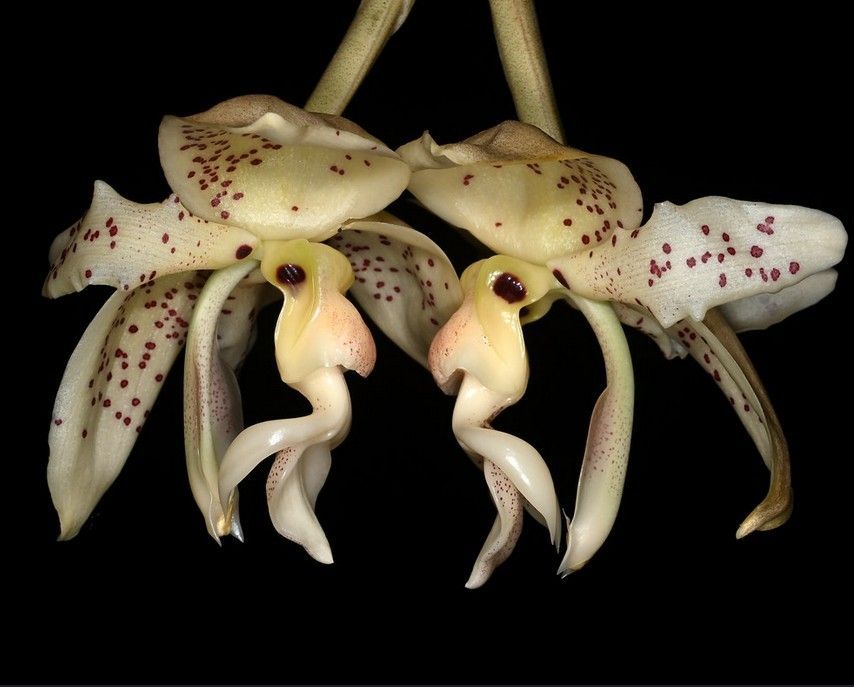
Stanhopea costaricensis is found in Nicaragua, El Salvador, Costa Rica, and Panama. Plants grow in intermediate evergreen or cloud and rainforests at 1,650 to 4,900 feet (500 to 1,500 meters) as a hot- to warm-growing epiphyte in moist, mist forest habitat. It blooms in the last spring and early summer with fragrant flowers. Plants are best grown mounted or in wire hanging baskets to accommodate the pendent inflorescences. Repotting should be done when new root growth is just starting. Growers report that Stanhopea are reluctant bloomers if given insufficient light, but the foliage is prone to burning or yellowing if light is too bright. Strong air movement is critically important. Photographer: Ron Parsons (www.flickr.com/photos/rpflowershots Grower: Orchid Species Plus Info: Charles Baker culture sheet www.orchidculture.com and Internet Orchid Species Photo Encyclopedia www.orchidspecies.com
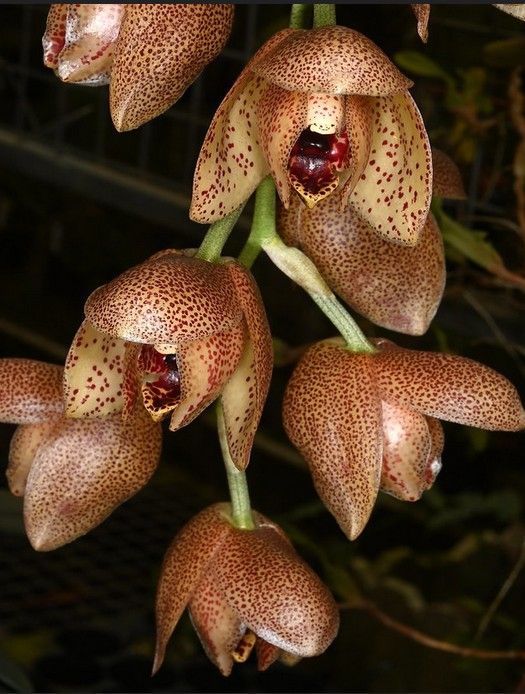
Acineta is a genus with 14 accepted species. Acineta superba is found in Venezuela, Colombia, Ecuador, and Peru in seasonally dry cloud forest at 930 to 2,100 meters (3,050 to 6,900 feet. It can have from 5 to 30 large, fleshy, heavily waxy, and spicily fragrant flowers which bloom in the late winter and spring. These plants should be grown mounted or in a hanging basket to accommodate the pendant inflorescence. It should be given a short, dry winter rest. Photographer: Ron Parsons (www.flickr.com/photos/rpflowershots Grower: Orchid Species Plus Info: Charles Baker culture sheet www.orchidculture.com and Internet Orchid Species Photo Encyclopedia www.orchidspecies.com
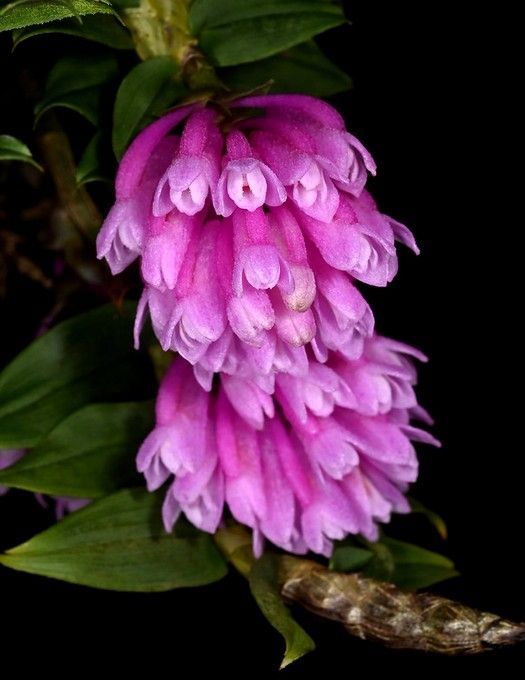
Dendrobium limpidum is endemic to Papua New Guinea and found at 1,500 to 2,100 meters in wet, montane forests. It is a Miniature to small-sized, cool- to cold-growing epiphyte or lithophyte that blooms at most any time of the year. Photographer: Ron Parsons (www.flickr.com/photos/rpflowershots Grower: John Leathers Info: Internet Orchid Species Photo Encyclopedia www.orchidspecies.com
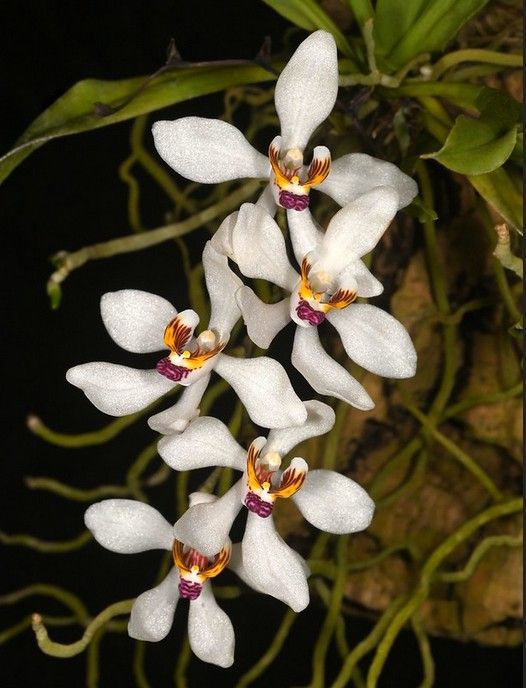
Sarcochilus falcatus is endemic to Australia and found from 100 to 1,400 meters (328 to 4,593 feet) on rainforest trees with exposure to fairly bright light and strong air movement. These plants, which grow in areas that are always very moist, are often found near gorges and ridge tops where winds and updrafts laden with clouds, mist, and drizzle are common. They appear to be found most frequently in areas in which the soil and rocks are of volcanic origin. The strongly fragrant blossoms open in the spring and last 2-3 weeks. They have an odor described as somewhat like vanilla. Photographer: Ron Parsons (www.flickr.com/photos/rpflowershots Grower: Mike Harrison Info: Charles Baker culture sheet www.orchidculture.com
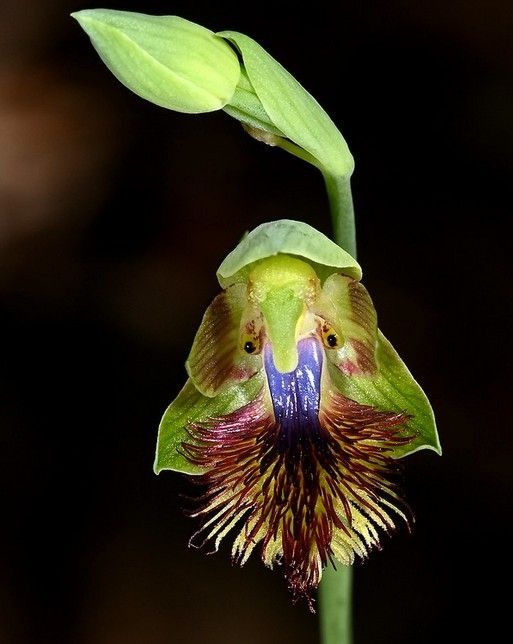
Orchids can be beautiful, and some can make you laugh! Have to love that about orchids! Here is one to make you smile. Calochilus campestris is a small-sized, cold-growing terrestrial from eastern Australia and New Zealand occurring in open forest and heathland in moist to well-drained soils at elevations of sea level to 500 meters that flowers in the spring and early summer. Photographer: Ron Parsons (www.flickr.com/photos/rpflowershots Taken in situ Info: Internet Orchid Species Photo Encyclopedia www.orchidspecies.com
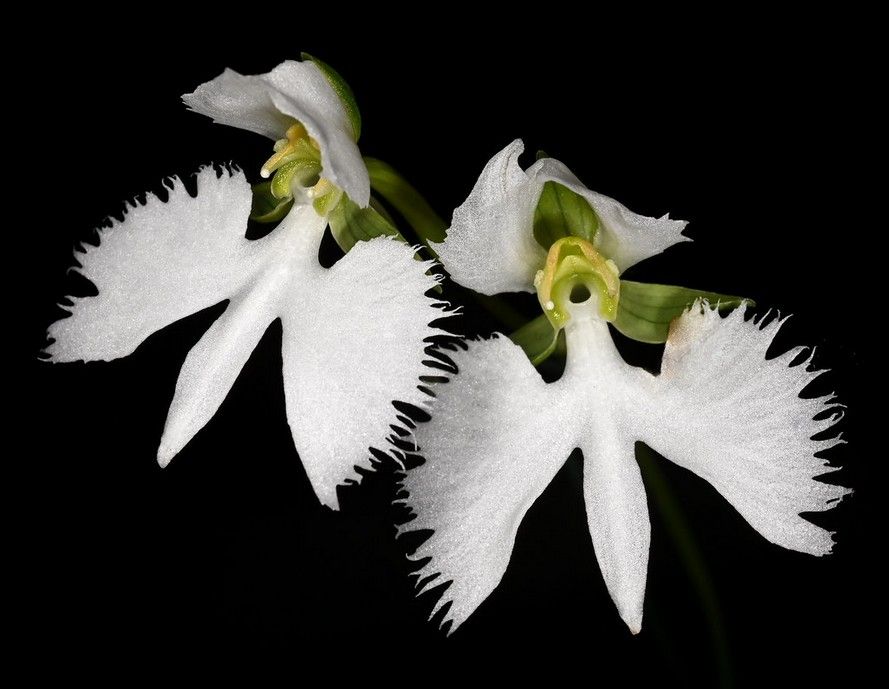
Pecteilis radiata, formerly Habenaria radiata, is also called the White Egret Orchid. It is found in western China, Japan, and Korea in forest glades at 1,500 meters (4.921 feet) as a small- to medium-sized cold-growing terrestrial that blooms in the summer. Photographer: Ron Parsons (www.flickr.com/photos/rpflowershots Grower: Anna Chai Info: Internet Orchid Species Photo Encyclopedia www.orchidspecies.com
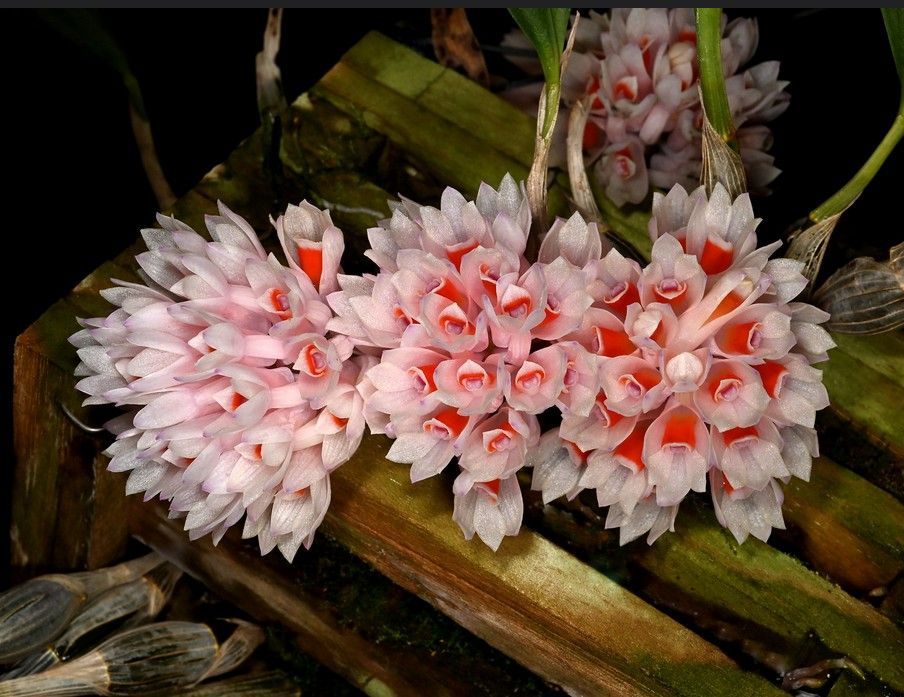
Dendrobium aurantiiroseum is endemic to New Guinea, growing epiphytically in loose moss in shady, mountain habitats from 2,100 to 2,250 meters (6,900 to 11,000 feet) that blooms in the winter and spring. Though beautiful, this species is reportedly very slow-growing and difficult to cultivate. Growing conditions should be maintained year-round. Photographer: Ron Parsons (www.flickr.com/photos/rpflowershots Grower: John Leathers Info: Charles Baker culture sheet www.orchidculture.com
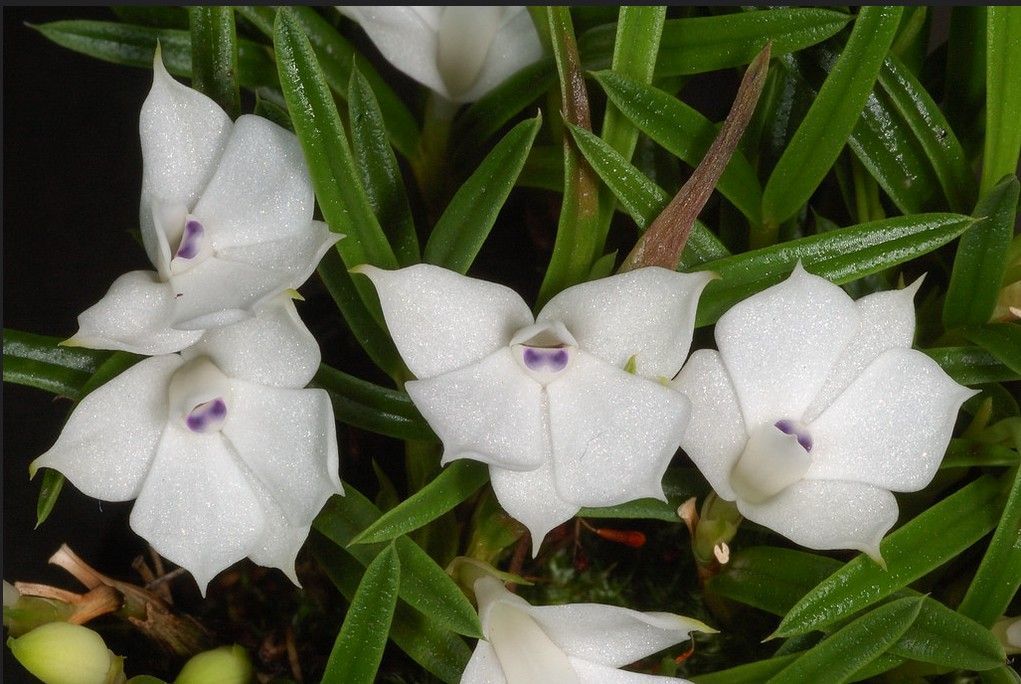
Dendrobium subuliferum is endemic to New Guinea, growing epiphytically in primary and secondary forests at 300 to 2,000 meters (1,000 to 6,550 feet) but occasionally grows on the surface of the ground in shady, moss-covered locations. The sometimes fragrant flowers occur in the fall through spring. May be potted in sphagnum moss over bark or mounted. Repot any time new roots are growing. Photographer: Eric Hunt Grower: Marni Turkel Info: Charles Baker culture sheet www.orchidculture.com and Internet Orchid Species Photo Encyclopedia www.orchidspecies.com
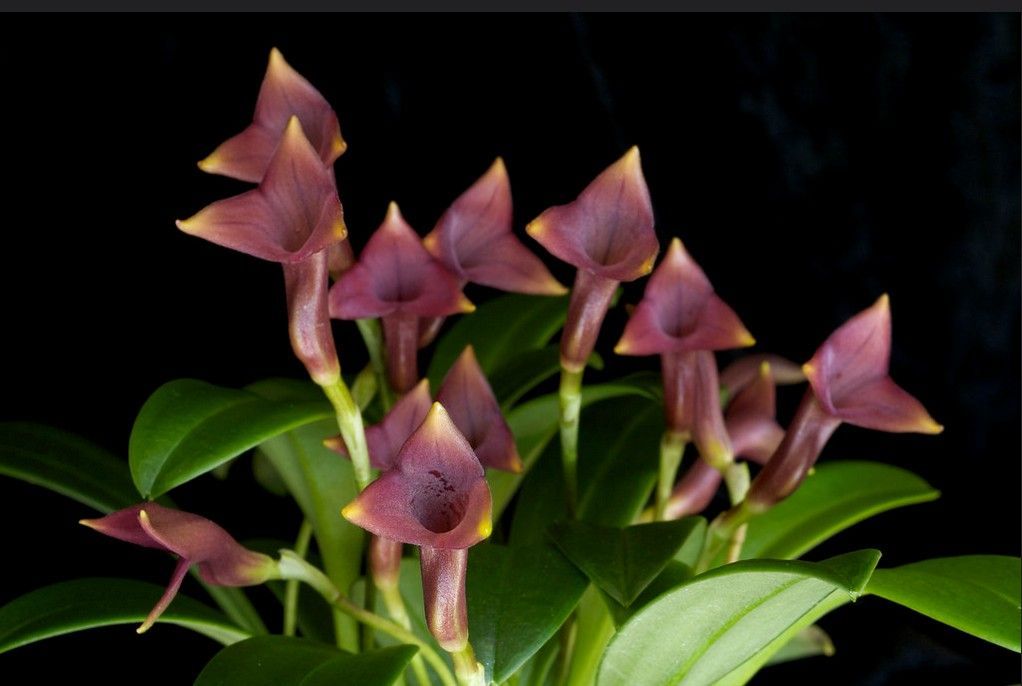
Masdevallia angulifera is endemic to Colombia and found in cool, moist, cloud forests at 1,800 to 2,000 meters (5,900 to 6,550 feet). It blooms in the winter through spring with fragrant flowers that can last up to three months. It should be potted in an open, fast-draining medium with some material to retain some moisture. Repotting is done every year in the late winter or early spring, or may be done anytime between autumn and spring, that does not interfere with flowering. Photographer: Eric Hunt Grower: Ron Parsons Info: Charles Baker culture sheet www.orchidculture.com and Internet Orchid Species Photo Encyclopedia www.orchidspecies.com

